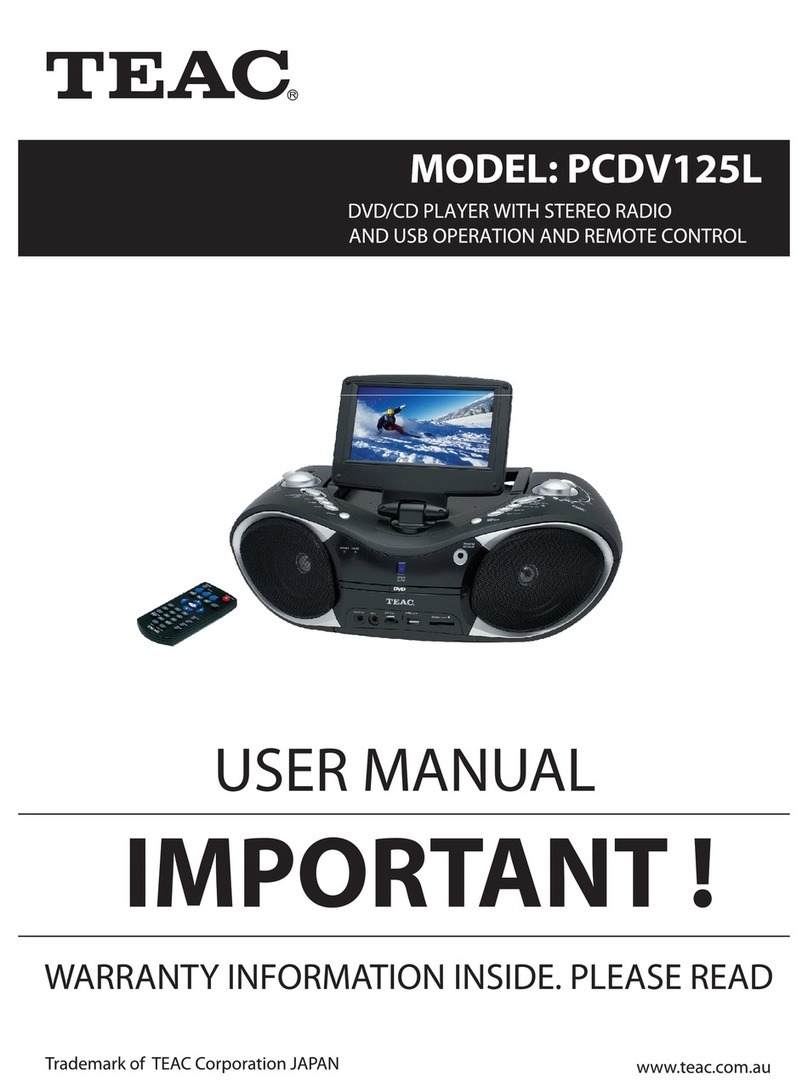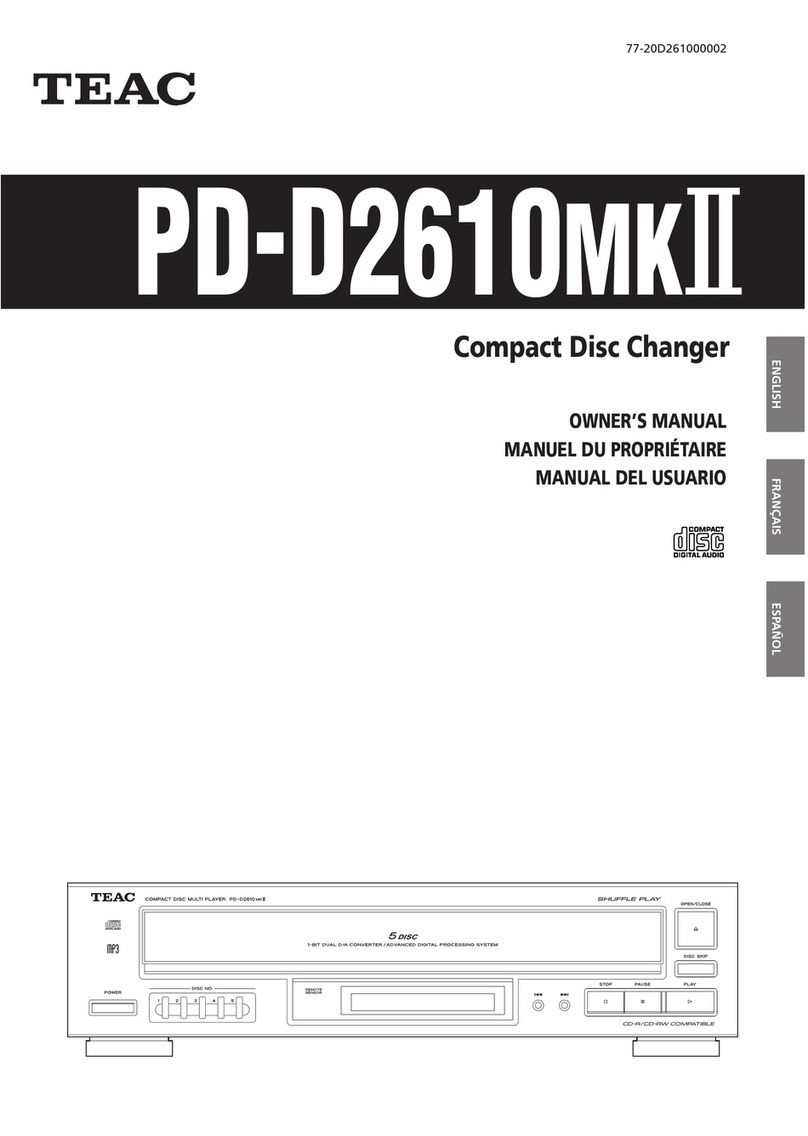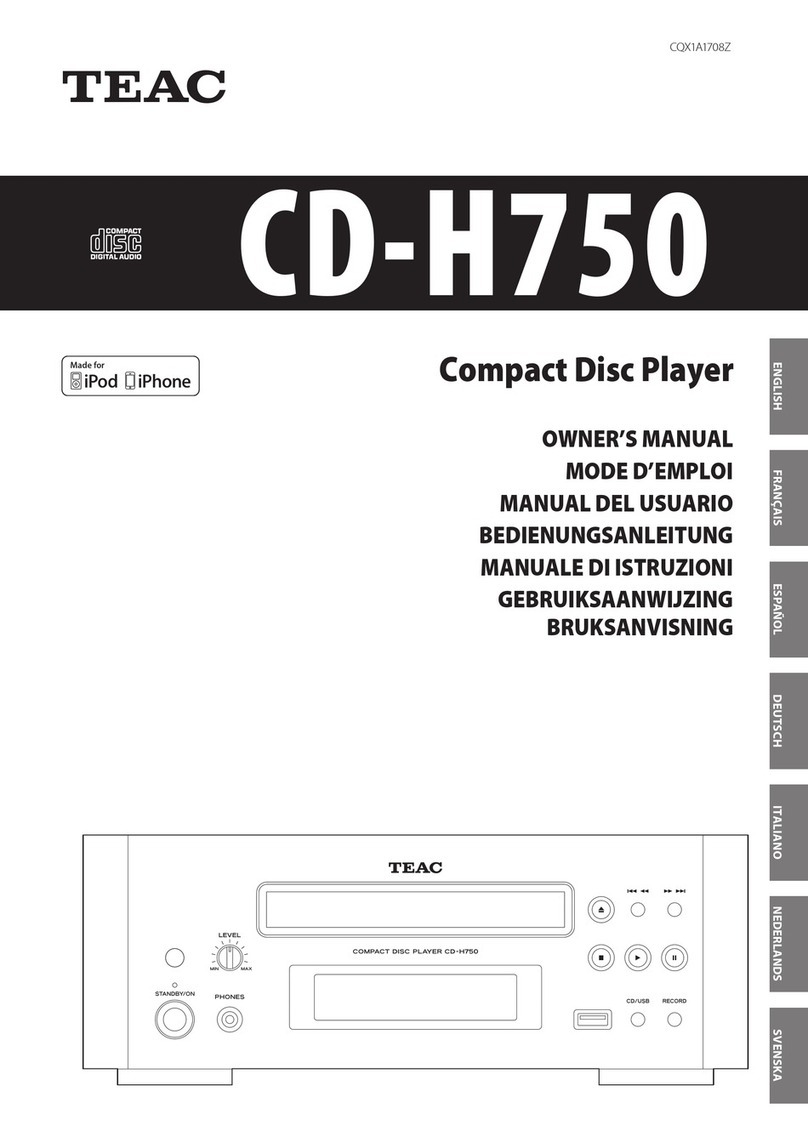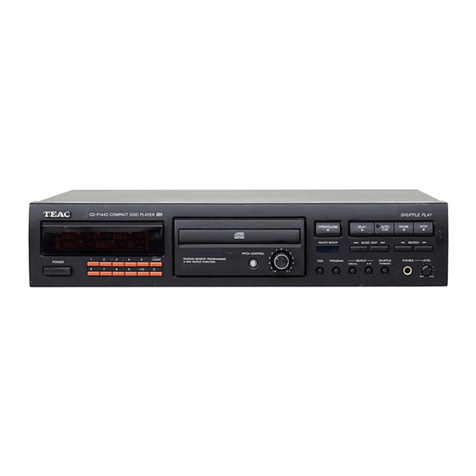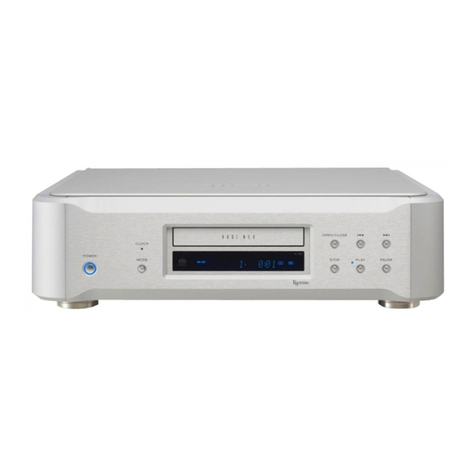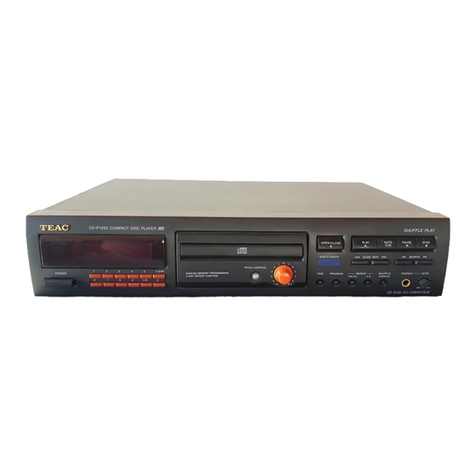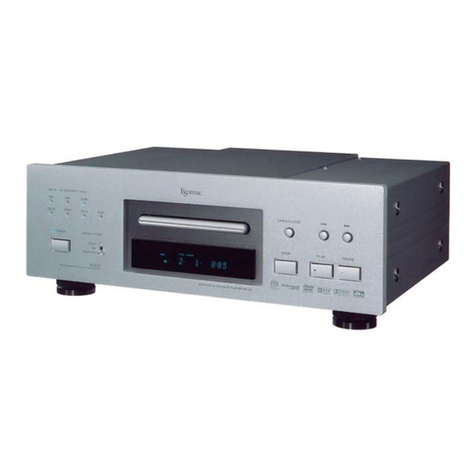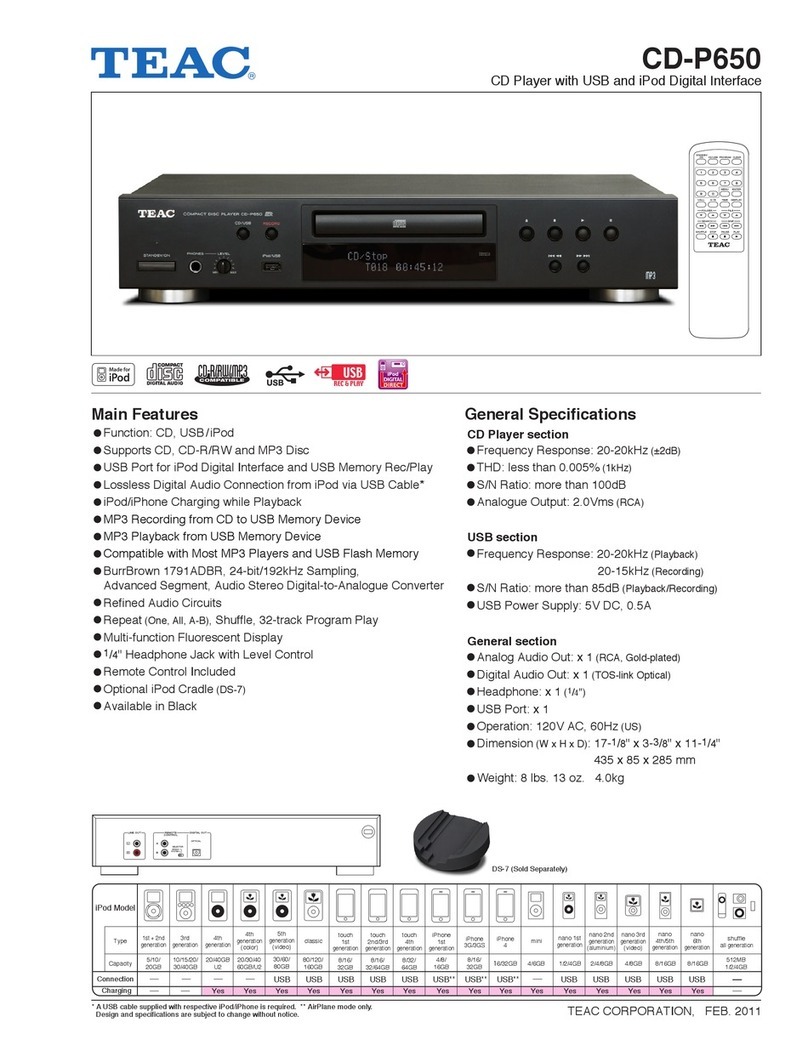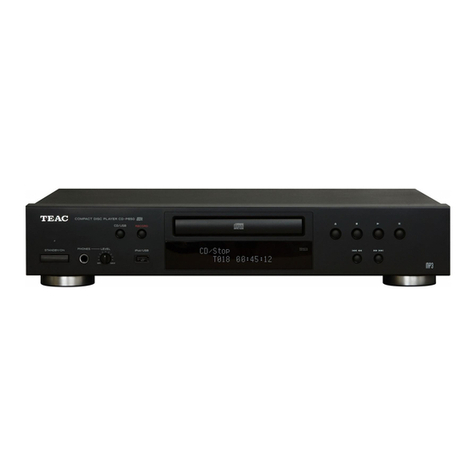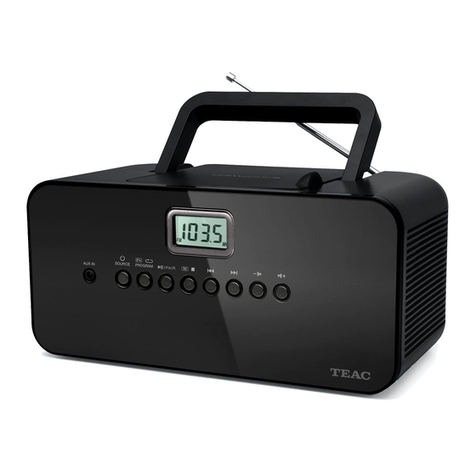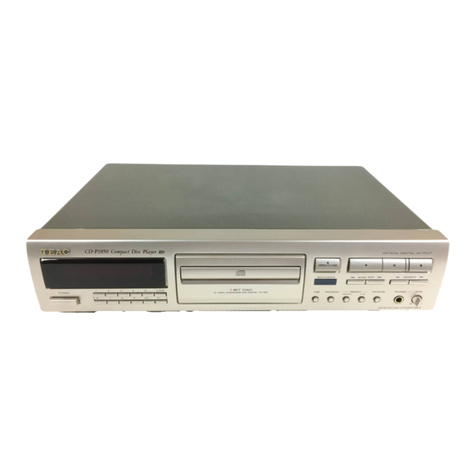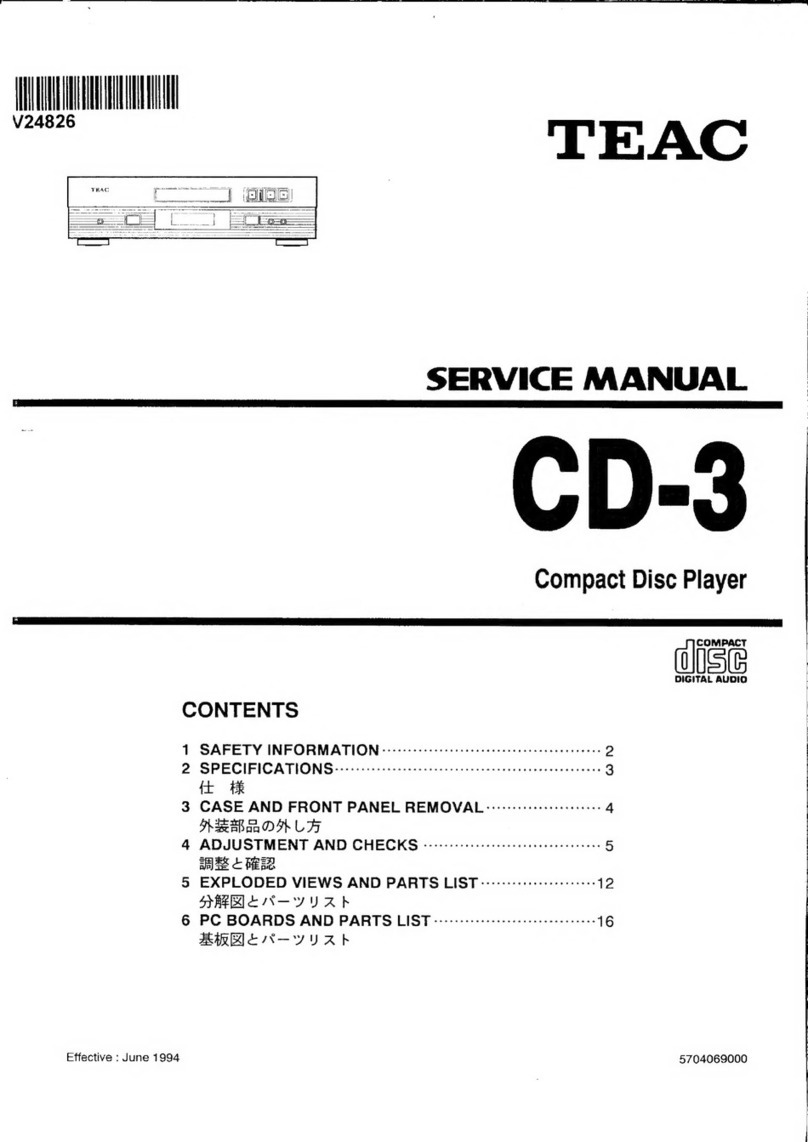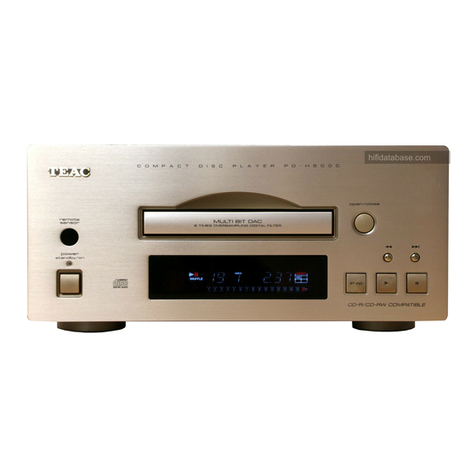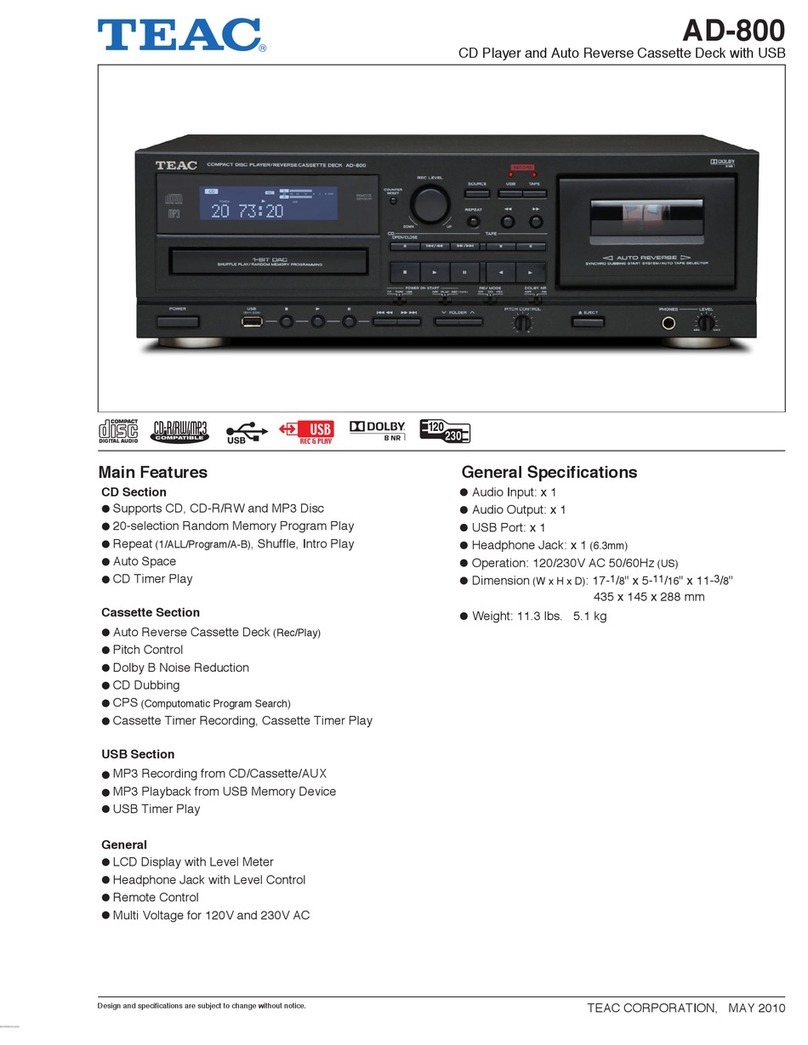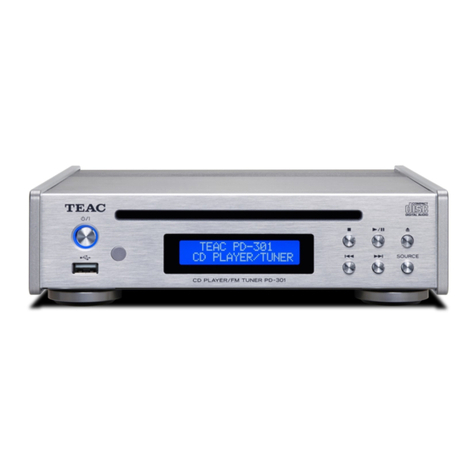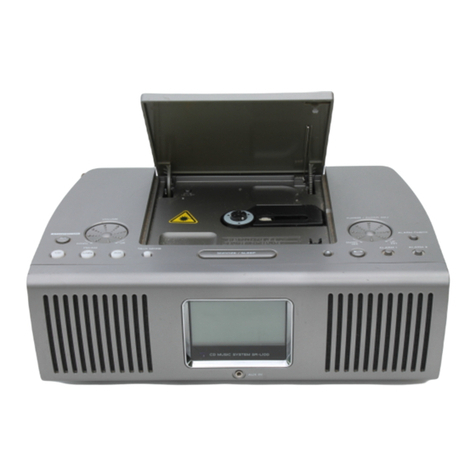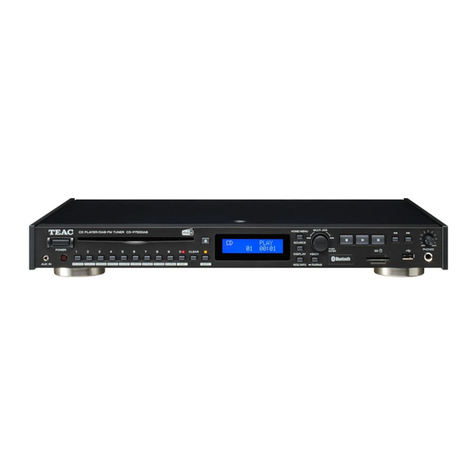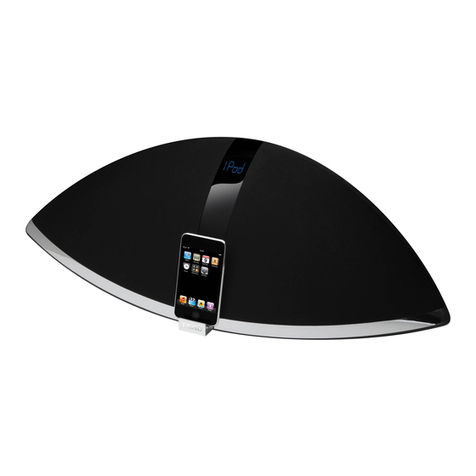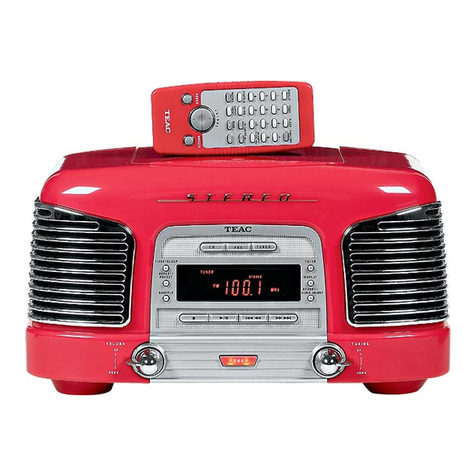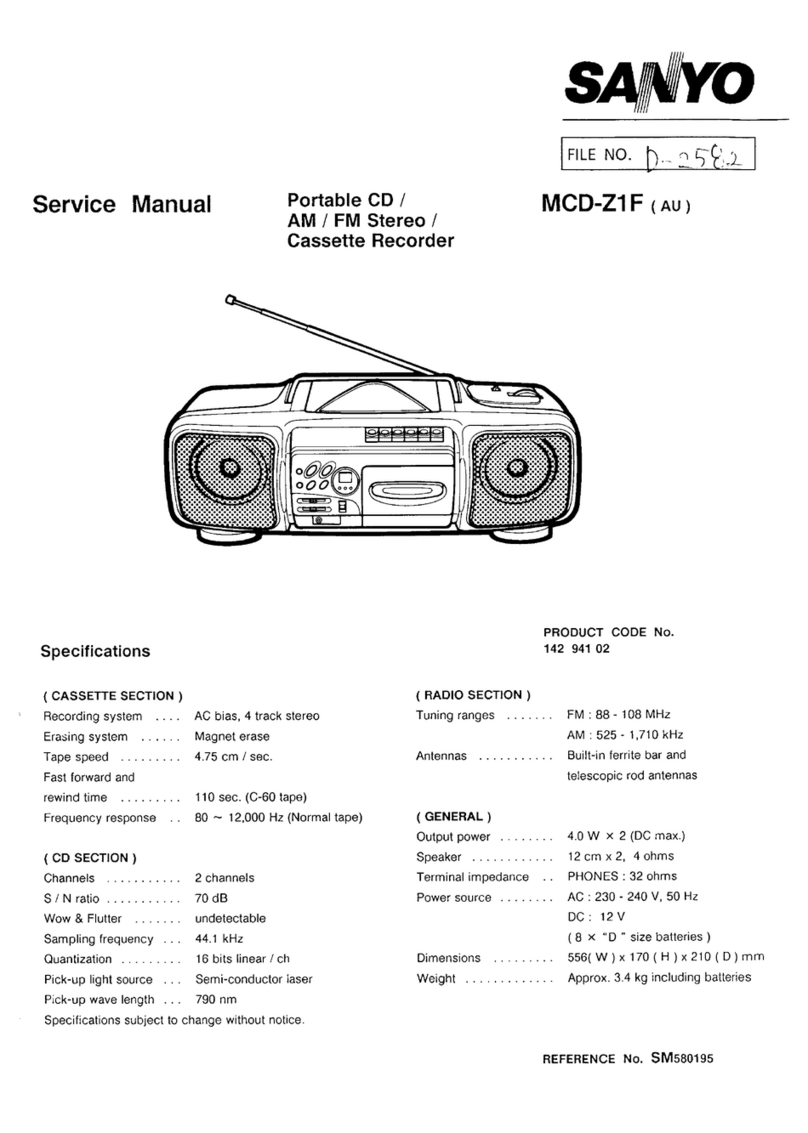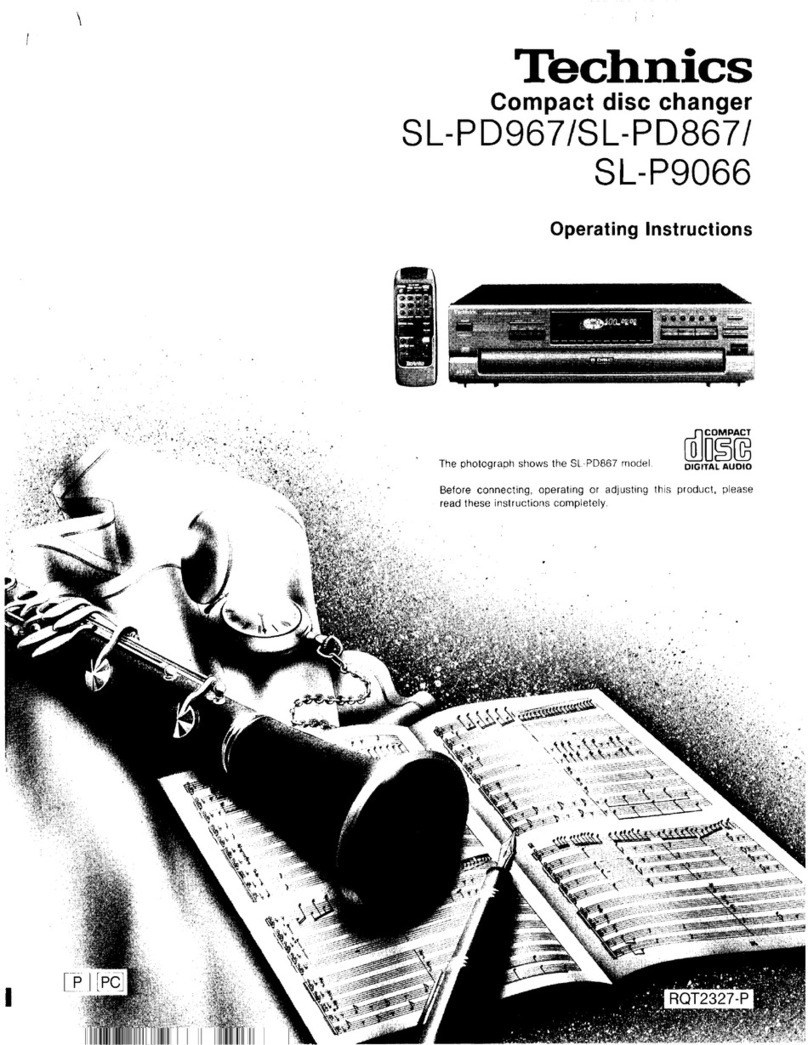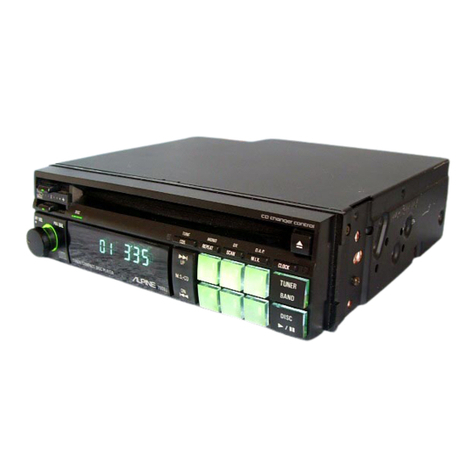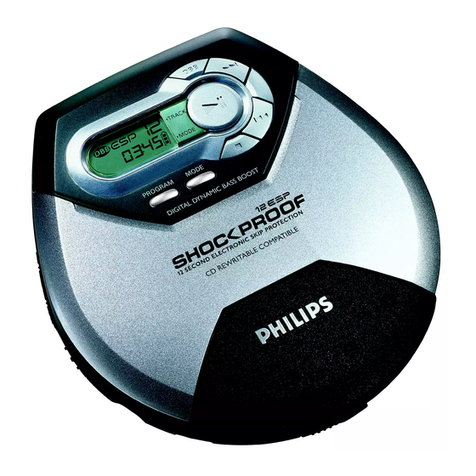
1) Read these instructions.
2) Keep these instructions.
3) Heed all warnings.
4) Follow all instructions.
5) Do not use this apparatus near water.
6) Clean only with dry cloth.
7) Do not block any ventilation openings. Install in accordance with
the manufacturer's instructions.
8) Do not install near any heat sources such as radiators, heat
registers, stoves, or other apparatus (including amplifiers) that
produce heat.
9) Do not defeat the safety purpose of the polarized or grounding-
type plug. A polarized plug has two blades with one wider than
the other. A grounding type plug has two blades and a third
grounding prong. The wide blade or the third prong are provided
for your safety. If the provided plug does not fit into your outlet,
consult an electrician for replacement of the obsolete outlet.
10) Protect the power cord from being walked on or pinched
particularly at plugs, convenience receptacles, and the point
where they exit from the apparatus.
11) Only use attachments/accessories specified by the manufacturer.
12) Use only with the cart, stand, tripod, bracket, or
table specified by the manufacturer, or sold with
the apparatus. When a cart is used, use caution
when moving the cart/apparatus combination
to avoid injury from tip-over.
13) Unplug this apparatus during lightning storms
or when unused for long periods of time.
14) Refer all servicing to qualified service personnel. Servicing is
required when the apparatus has been damaged in any way, such
as power-supply cord or plug is damaged, liquid has been spilled
or objects have fallen into the apparatus, the apparatus has been
exposed to rain or moisture, does not operate normally, or has
been dropped.
The apparatus draws nominal non-operating power from theo
AC outlet with its POWER or STANDBY/ON switch not in the ON
position.
The mains plug is used as the disconnect device, the disconnecto
device shall remain readily operable.
Caution should be taken when using earphones or headphoneso
with the product because excessive sound pressure (volume) from
earphones or headphones can cause hearing loss.
IMPORTANT SAFETY INSTRUCTIONS
Precautions concerning batteries
Misuse of batteries could cause them to rupture or leak leading
to fire, injury or the staining of nearby things. Please read and
observe the following precautions carefully.
Be sure to insert the batteries with correct positive (o+) and
negative (_) orientations.
Use batteries of the same type. Never use different types ofo
batteries together.
If the remote control is not used for a long time (more than ao
month), remove the batteries to prevent them from leaking.
If the batteries leak, wipe away the leakage inside the batteryo
compartment and replace the batteries with new ones.
Do not use batteries of types other than those specified. Doo
not mix new batteries with old ones or use different types of
batteries together.
Do not heat or disassemble batteries. Never throw batteries intoo
fire or water.
Do not carry or store batteries with other metallic objects. Theo
batteries could short circuit, leak or explode.
Never recharge a battery unless it is confirmed to be ao
rechargeable type.
“DSD” is a registered trademark.
“Super Audio CD”is a registered trademark.
Microsoft, Windows 7 and Windows Media are either registered trademarks or
trademarks of Microsoft Corporation in the United States and/or other
countries.
Other company names and product names in this document are the trademarks
or registered trademarks of their respective owners.
Do not expose this apparatus to drips or splashes.o
Do not place any objects filled with liquids, such as vases, on theo
apparatus.
Do not install this apparatus in a confined space such as a booko
case or similar unit.
The apparatus should be located close enough to the AC outleto
so that you can easily reach the power cord plug at any time.
If the product uses batteries (including a battery pack or installedo
batteries), they should not be exposed to sunshine, fire or
excessive heat.
CAUTION for products that use replaceable lithium batteries:o
there is danger of explosion if a battery is replaced with an
incorrect type of battery. Replace only with the same or
equivalent type.
Products with Class construction are equipped with a power
supply cord that has a grounding plug. The cord of such a product
must be plugged into an AC outlet that has a protective grounding
connection.
CAUTION
WARNING
